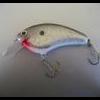
BobP replied to Drewski73's topic in Fishing Rods, Reels, Line, and Knots

BobP replied to Green Trout's topic in Fishing Rods, Reels, Line, and Knots

BobP replied to blckshirt98's topic in Tournament Talk

BobP replied to WPCfishing's topic in Fishing Rods, Reels, Line, and Knots

BobP replied to ChrisD46's topic in Fishing Rods, Reels, Line, and Knots

BobP replied to walkerd17's topic in Fishing Tackle

BobP replied to Green Trout's topic in Fishing Rods, Reels, Line, and Knots

BobP replied to Green Trout's topic in Fishing Rods, Reels, Line, and Knots

BobP replied to FryDog62's topic in Fishing Rods, Reels, Line, and Knots

BobP replied to Green Trout's topic in Fishing Rods, Reels, Line, and Knots

BobP replied to FryDog62's topic in Fishing Rods, Reels, Line, and Knots

BobP replied to Maxximus Redneckus's topic in Fishing Rods, Reels, Line, and Knots

BobP replied to Ads7633's topic in Fishing Rods, Reels, Line, and Knots
We have placed cookies on your device to help make this website better. You can adjust your cookie settings, otherwise we'll assume you're okay to continue.

